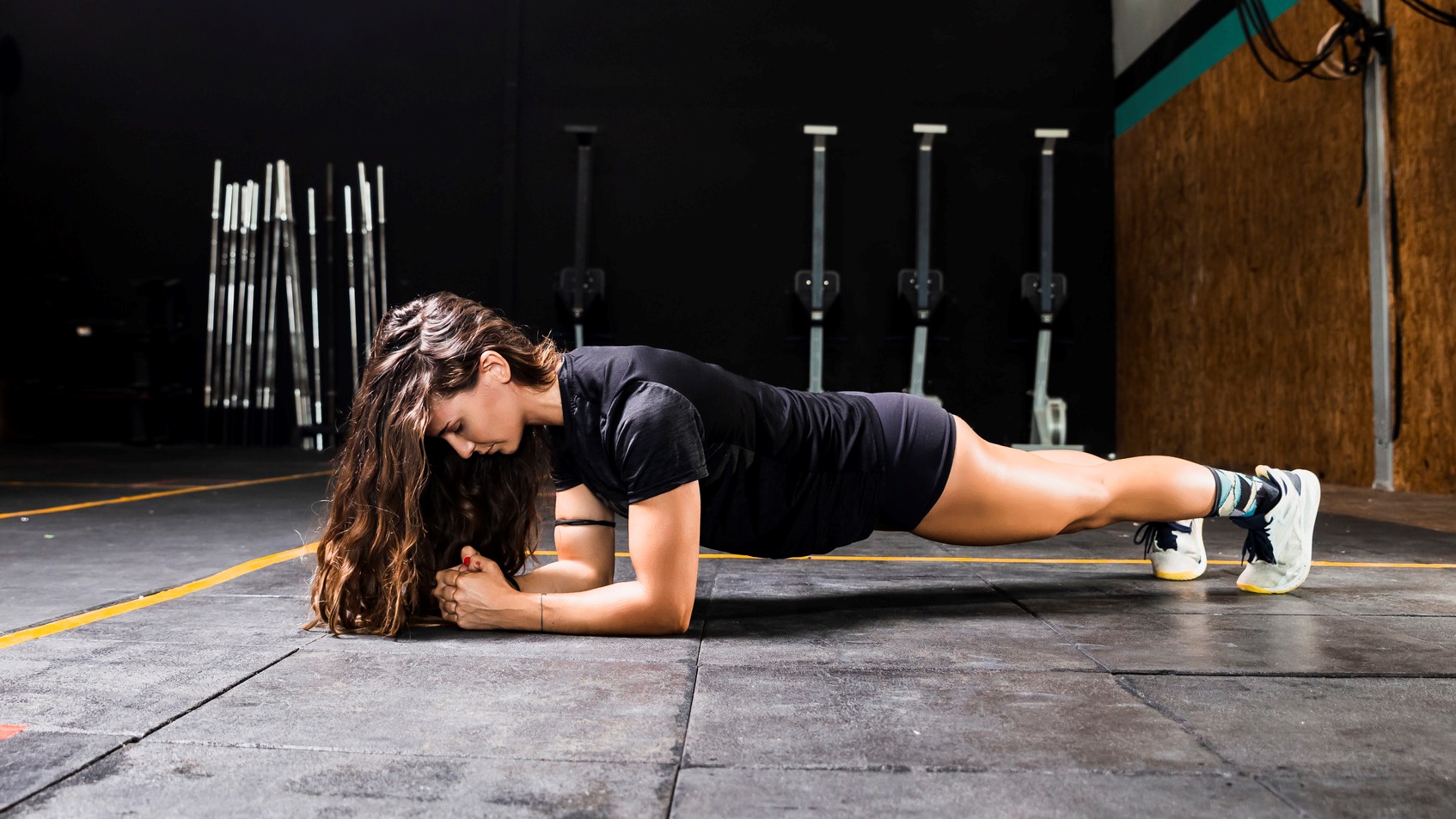I did a plank twist every day for a week — here’s what happened

Planks are one of the most basic yet beneficial core exercises you can do. But don’t confuse “basic” for “easy” — done correctly, planks can be incredibly challenging and take some time to master. Just ask Margot Robbie, who beat out her Barbie co-stars for the longest-held plank with a time of four minutes and ten seconds.
Once you’ve gotten to Robbie-level (or at least close to it) with your plank practices, you may be looking for a way to add some variety to this classic exercise. A plank twist, which involves holding a plank position and “twisting” your hips to touch the mat on each side, will up the ante while heavily recruiting your internal and external obliques for the job. Just like regular planks, plank twists don’t require any additional equipment — just a mat and your body.
Since I’ve gotten a bit bored with my usual oblique moves, I decided to add a plank twist into my daily exercise routine for a full week. Keep in mind though, you’ll want to perfect the standard plank before attempting to add the twist. It’s very easy to “cheat” with your form, so if you’ve just begun a fitness regimen, consider meeting with a certified personal trainer to ensure your planks — and plank twists — look solid.
Additionally, I usually recommend giving a specific muscle group at least 24 hours of recovery time between workout efforts — your abs need time to rest and rebuild.
How to do a plank twist
Ready to try the plank twist? Roll out a mat while we review the proper form:
- Lie face down on a mat, with your feet about hip width apart and your elbows lined up directly under your shoulders.
- Slowly lift your body up from the mat, keeping your shoulders aligned directly over your elbows, your forearms parallel to each other, your toes hip width apart, and your spine neutral. This is your standard plank form.
- Slowly lower your hips to the left, aiming your left hip bone toward the mat. Be sure to keep your right elbow and right toes firmly planted on the ground.
- Lift your hips back up to the starting position.
- Slowly lower your hips to the right, aiming your right hip bone toward the mat. Again, make sure you’re not allowing your left elbow and left toes to elevate off the mat.
- Lift your hips back to the starting position. Repeat on each side for the desired number of reps.
As is the case with standard planks, it’s common to let the lumbar spine come out of alignment while performing the plank twist. If you find your lower back beginning to arch, come to your knees instead of your toes, elongate your spine, and reduce your range of motion on the “twisting” portion of the exercise.
Another common pitfall with the plank twist is allowing the hips to rise, forming a pike position with your body. Dropping to your knees is also an option in this instance, but if your planks look more like triangles, it would be a good idea to work on your standard plank form first.
Get instant access to breaking news, the hottest reviews, great deals and helpful tips.
I did a plank twist every day for a week — here’s what happened
Excited to swap out the Russian twists and side planks, I added the plank twist to my daily core routine for a full week. My goal was to perform two sets of 12 alternating repetitions on each side. Here’s what happened:
At first, my lower back didn’t feel great
I’ve built up my plank time over the years, but even as a certified personal trainer, I’m still susceptible to form mistakes. Pair my degenerating discs with my always-tight lower back, and you get a plank that needs a lot of physical and mental effort to keep in good form.
Adding the twist made that effort even more difficult — I found it really hard to maintain a neutral spine when dropping my hips toward the mat. After the first two days of plank twists, I noticed that my back was more sore than usual. The pain wasn’t enough to stop me from doing the exercise, however it was enough for me to reduce my reps from 12 to 10 and spend a few moments in child’s pose after each set. Luckily my back started to get used to the exercise around day four, and I was able to return to my original rep count for the last three days of the week.
My range improved as the week progressed
I have to admit, there wasn’t a lot of “twisting” in my first three days of plank twists. I would drop my hips toward the mat, but it was hard to keep the rest of my body still and in proper position. I decided to reduce my range in order to keep my elbows, shoulders and feet in alignment (and, as I mentioned above, to alleviate some lower back issues I was having).
By day four though, I noticed that I was able to drop my hips a little closer to the mat than I could before while still keeping correct form. By day six, I had improved my range so much that my hips would hover just above the mat as I’d twist them to each side.
I was able to increase weight on my suitcase carry…
One of my favorite exercises for functional core strength is the suitcase carry, which involves holding a heavy weight in one hand (like, you guessed it — a suitcase) and walking across the floor while keeping your body in alignment.
On day five of my plank twists, I attempted a suitcase carry using a weight that I’d progressed to recently. After performing a set, I realized that it felt easy — much easier than it had on a previous attempt a few days prior. So I upped my weight by ten pounds, and performed the exercise with the heaviest weight I’ve used. And while it was challenging, my obliques felt strong and conditioned throughout the effort.
…but I didn’t notice any drastic improvements in other areas
I had anticipated that a week-long plank twist intensive might translate to better performances on runs, easier squats, and deadlifts that felt stronger and more supported.
While adding the plank twist certainly didn’t derail any progress in these areas, I don’t really think it resulted in any discernible improvement either. It usually takes a lot longer than a week to see any real progress in any type of athletic pursuit, but I still thought I’d notice even a small positive change with my daily plank twists.
The verdict? Even though my back took some time to acclimate, and I didn’t notice any real residual effects right away, I think I’ll begin adding plank twists to my core routine every once in a while — just to keep my oblique work fresh.
More from Tom's Guide
- 19 best plank variations to build core strength and muscle
- Forget planks — this seated ab workout sculpts your core in just 10 minutes
- I did the Leaning Camel exercise every day for a week — here’s what happened to my body

Jennifer Rizzuto is a freelance writer and certified personal trainer based in Long Island, NY. She covers various fitness-related topics and reviews for Tom's Guide. She also writes sketch comedy and short films, and performs frequently as an actor, singer, and improviser. When she's not writing, working out, or performing, you'll find her trying to convince her husband to get a dog.
